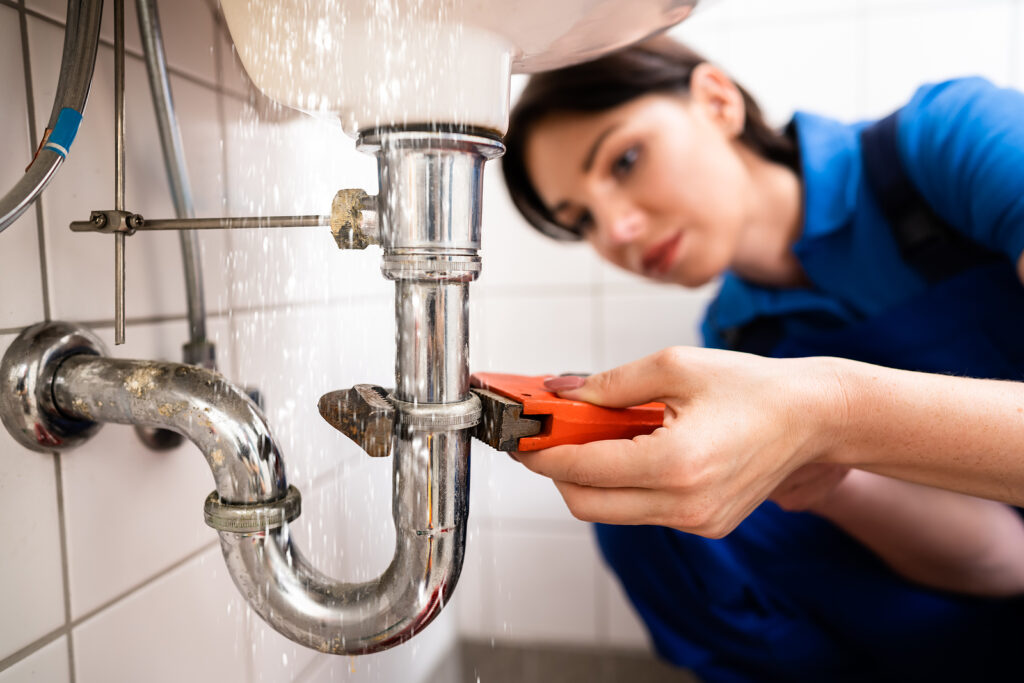How to Detect Hidden Leaks in Your Plumbing System
Some plumbing problems make themselves known with a loud drip or a flooded basement. Others? They hide in silence. These hidden leaks—tucked behind drywall, under flooring, or inside your foundation—can quietly wreak havoc before you ever notice a thing.

Left undetected, even a small leak can lead to water damage, mold growth, and skyrocketing utility bills. That’s why knowing how to identify the subtle signs of a hidden plumbing leak is just as important as fixing the obvious ones.
In this post, we’ll show you what symptoms to watch for, how to do a basic leak check yourself, and when it’s time to call in the pros at Penning Plumbing, Heating, Cooling & Electric.
Why Hidden Leaks Are a Big Deal
Silent But Costly
A single pipe leaking a few drops per minute might not seem like much—until weeks go by and the damage spreads. Structural wood can rot, drywall can warp, and mold can take hold in as little as 24 to 48 hours.
Health and Safety Risks
Beyond the structural concerns, moisture in walls or ceilings creates the perfect breeding ground for mildew and mold. That can lead to respiratory issues for your family, especially for young kids, older adults, and anyone with asthma or allergies.
Your Water Bill Might Know Before You Do
If your monthly water bill suddenly jumps but your usage hasn’t changed, that’s often a first clue. Even without puddles or dripping noises, your plumbing could be losing water behind the scenes.
Telltale Signs of a Hidden Leak
Not every leak comes with a puddle. Be on the lookout for these red flags:
1. Unexplained Water Stains
Brown or yellowish stains on ceilings, floors, or walls? They’re often a giveaway that water has been seeping through—especially if the stains keep growing.
2. Musty or Damp Odors
A persistent musty smell usually means water is pooling somewhere it shouldn’t. Even if you can’t see the moisture, your nose might clue you in.
3. Bubbling or Peeling Paint
Moisture behind paint can cause it to bubble, flake, or peel. Warping or bulging drywall is another giveaway that water is trapped inside the walls.
4. Low Water Pressure
If one or more fixtures suddenly lose water pressure, it may mean water is escaping somewhere else in the line.
5. Mold or Mildew Spots
Mold patches in corners, behind toilets, or under sinks are not just a cleaning issue—they can signal a persistent leak.
DIY Leak Detection Techniques
Before calling in the experts, you can try a few basic checks to narrow down the problem.
Monitor the Water Meter
Turn off all water inside and outside the house (including appliances). Then watch the water meter. If it continues to move, there’s likely a leak somewhere.
Dye Test Your Toilet
Toilets are frequent leak culprits. Add a few drops of food coloring to the tank. Wait 15–30 minutes without flushing. If color appears in the bowl, you’ve got a silent leak.
Listen Carefully
At night, when the house is quiet, walk near walls, sinks, or toilets. A faint hissing or dripping sound could lead you to the problem.
Areas Where Hidden Leaks Love to Hide
- Behind walls near kitchens and bathrooms
- Under flooring near dishwashers, refrigerators, or washing machines
- Inside crawl spaces or basements
- Within slab foundations
- Ceiling spaces below bathrooms or showers
When It’s Time to Bring in a Professional
Some leaks are just too well-hidden or dangerous to deal with on your own. If any of the following apply, call Penning Plumbing right away:
The signs keep coming back
If you’ve patched a ceiling or dried up a stain, but it keeps returning, there’s likely an ongoing leak.
Water is seeping near electrical lines
This is a major safety hazard. Stop what you’re doing and get a licensed plumber (and possibly electrician) involved immediately.
Your walls or floors feel soft or spongy
This usually means water has already started damaging the structure.
You’ve ruled out everything else
Sometimes, it takes specialized tools like thermal cameras or acoustic listening devices to find what the eye can’t see.
Why West Michigan Homeowners Trust Penning Plumbing
For over a century, families across West Michigan have relied on Penning Plumbing, Heating, Cooling & Electric to keep their homes safe, dry, and comfortable. We combine old-school customer care with advanced diagnostic tools—like moisture sensors and camera inspections—to track down leaks before they cause major damage.
Whether it’s a pinhole leak in a pipe or a slab leak under your foundation, our licensed plumbers can find the problem fast and fix it the right way.
Don’t Let a Hidden Leak Catch You Off Guard
Early detection is everything when it comes to hidden plumbing leaks. The sooner you act, the more you can save—in both money and stress.
If you’ve noticed any of the warning signs we covered today, don’t wait for things to get worse.
Contact us today at 616-538-0220 for more information.


